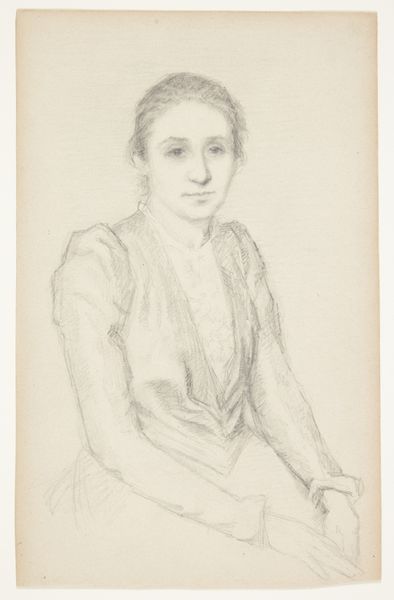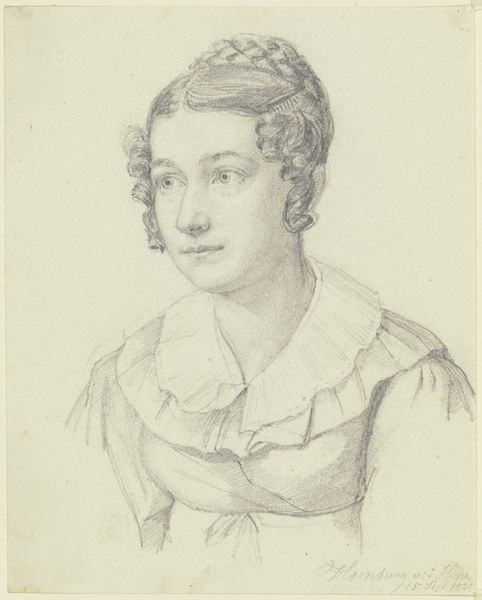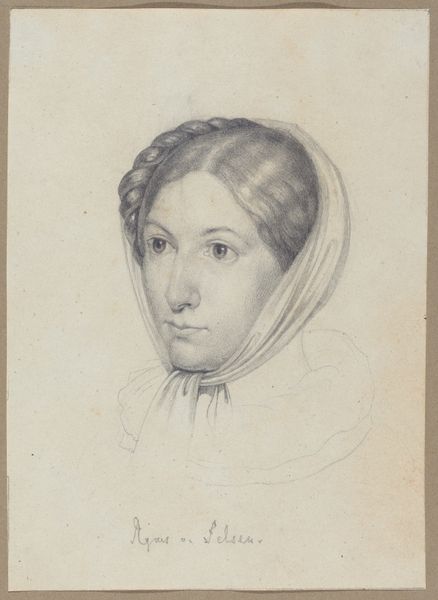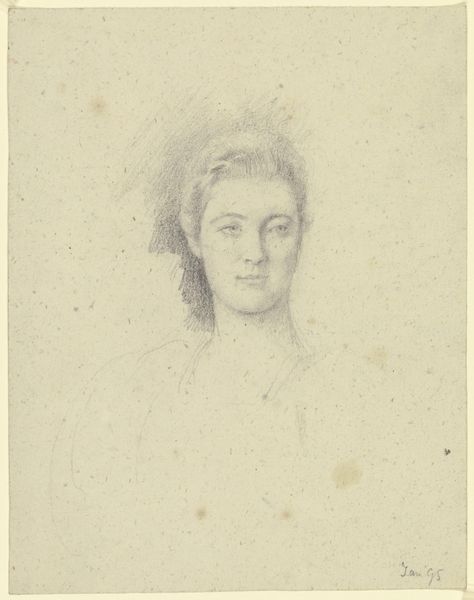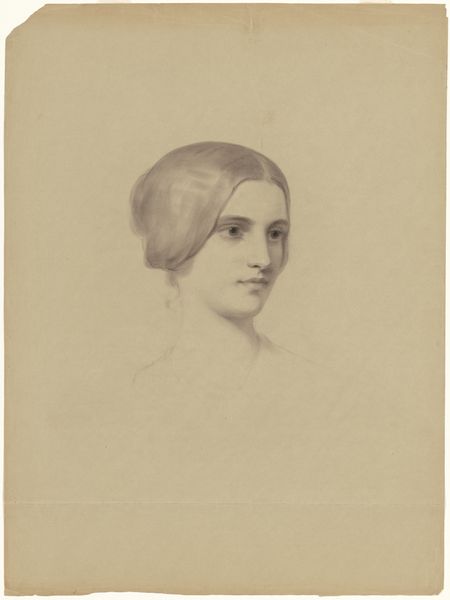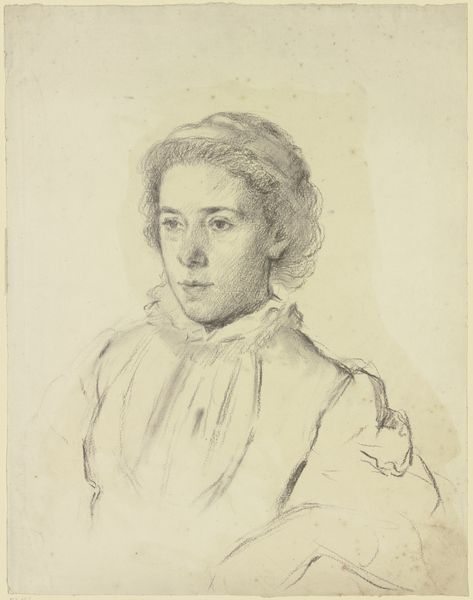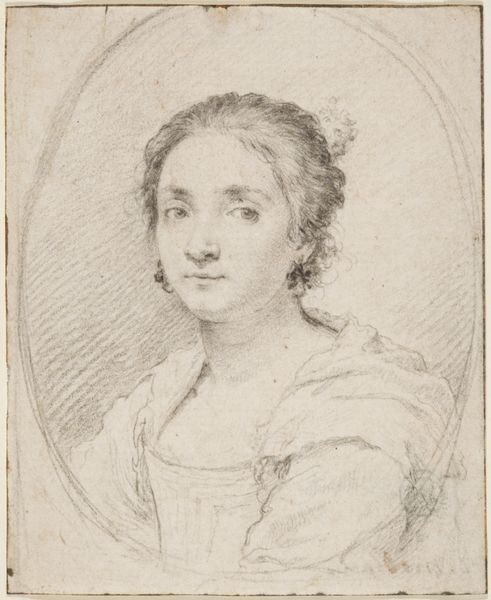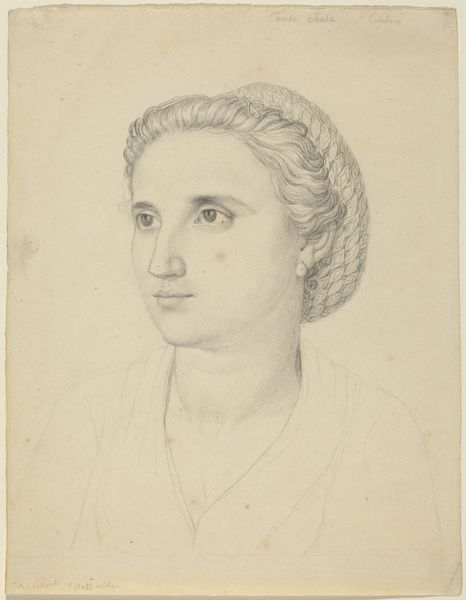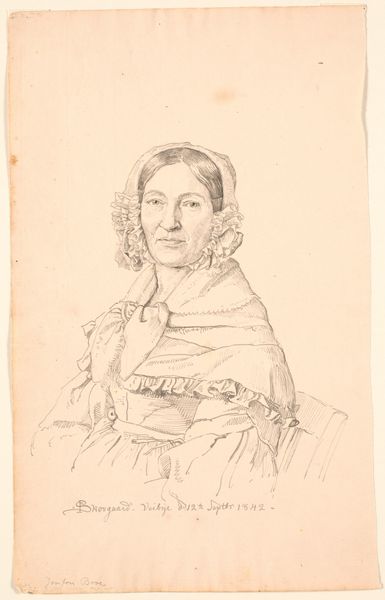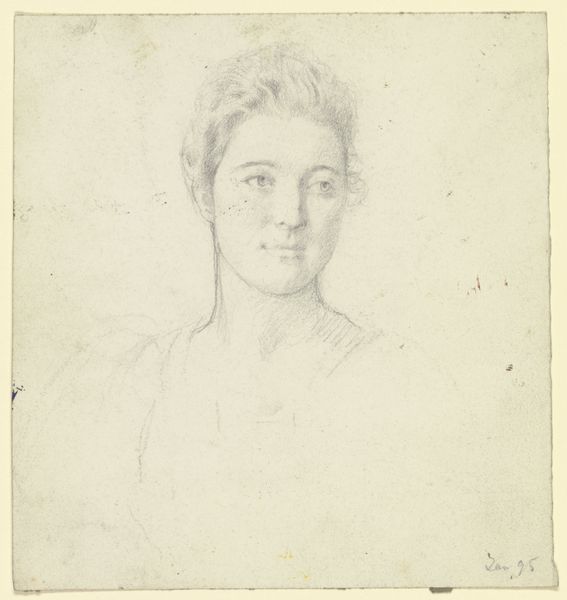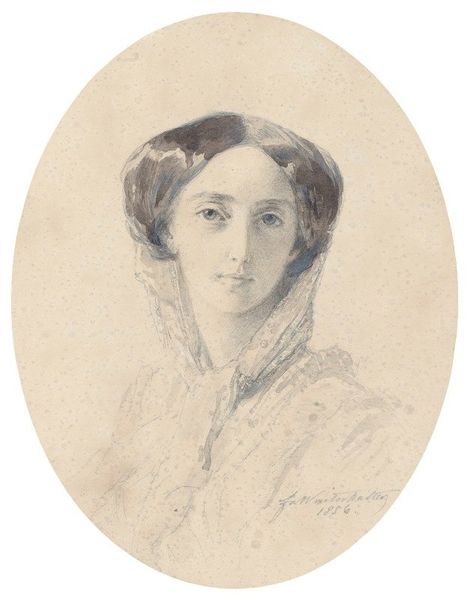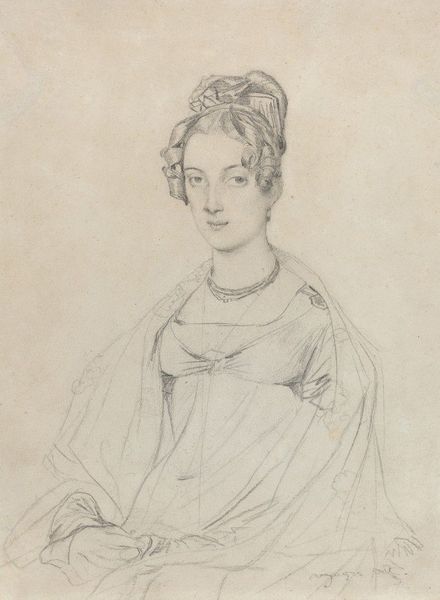
Bildnis der Tochter des Stuttgarter Schuhmachers Unterlerches, im Haus des Vaters gezeichnet 1820
0:00
0:00
drawing, pencil
#
portrait
#
pencil drawn
#
drawing
#
amateur sketch
#
facial expression drawing
#
light pencil work
#
16_19th-century
#
pencil sketch
#
portrait reference
#
german
#
pencil drawing
#
romanticism
#
pencil
#
animal drawing portrait
#
portrait drawing
#
pencil work
#
academic-art
Copyright: Public Domain
Curator: Here we have Nikolaus Hoff’s drawing, "Portrait of the Daughter of the Stuttgart Shoemaker Unterlerches, Drawn in the Father's House," created in 1820. Editor: There's a striking vulnerability to this image. Her downcast gaze and the softness of the pencil lines lend a wistful quality. It feels quite intimate. Curator: It's interesting to consider the circumstances of its creation. Hoff, although now quite obscure, was capturing not a wealthy patron, but the daughter of a local shoemaker. This provides a glimpse into a different stratum of 19th-century society that often goes unrepresented. Editor: Absolutely, and I wonder about her agency in this portrait. Was this commissioned by her father? Was it a gesture of pride? Her somber expression makes me question her own feelings about being depicted in this way. Also, she has caught my eye, as she seems aware of being portrayed, it's clear in her melancholic eyes. Curator: We know Hoff primarily operated within academic art circles, seeking to legitimize his artistic pursuits through recognition from established institutions. This piece may reflect a tension between the formal constraints of portraiture and the more immediate realities of his subject's social standing. It prompts thoughts on art’s potential for social mobility, and who gets represented and why. Editor: And perhaps who gets remembered. Hoff clearly felt this image held value, evidenced by its preservation. Yet, the daughter of the shoemaker, beyond this likeness, remains largely unknown. Does this drawing serve as a form of quiet resistance against historical erasure, offering visibility to a marginalized figure? I do wonder that as I view this. Curator: That’s a lovely way to put it. By bringing her likeness into the artistic record, however modest in execution, Hoff does perhaps grant her a space that was previously denied. Editor: Ultimately, this portrait encourages a thoughtful look at the representation of women, class, and the complexities of visibility in the early 19th century. Curator: Indeed. Hoff’s work challenges us to consider the stories behind the portraits, extending our understanding of history beyond the traditionally privileged.
Comments
No comments
Be the first to comment and join the conversation on the ultimate creative platform.
